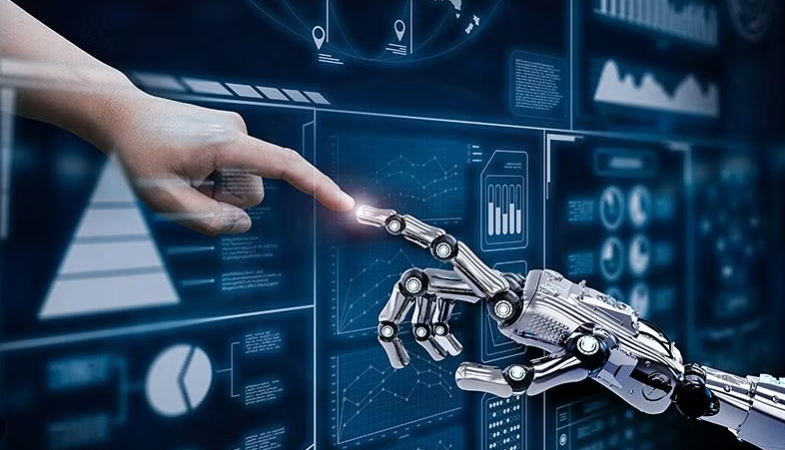AI refers to the creation of intelligent machines that can perform tasks that typically require human intelligence, such as reasoning, perception, and learning. It is a broad field that encompasses various subfields, such as natural language processing, computer vision, robotics, and more.
Machine Learning is a specific subset of AI that involves training machines to learn from data, without being explicitly programmed. It uses statistical algorithms to identify patterns and make predictions based on examples. Machine learning can be supervised, unsupervised, or semi-supervised, depending on the type of data available.
In other words, AI is a general term that encompasses various technologies that can create intelligent machines, while Machine Learning is a specific technique that falls under the umbrella of AI and involves training machines to learn from data.
Can you give a few examples of the practical uses of AI?
Here are a few examples of practical uses of AI:
Virtual assistants: AI-powered virtual assistants such as Apple’s Siri, Amazon’s Alexa, and Google Assistant are becoming increasingly popular for helping people with tasks such as setting reminders, answering questions, and controlling smart home devices.
Image and speech recognition: AI can be used for recognizing and analyzing images, videos, and speech. For example, facial recognition technology can be used for security purposes, while speech recognition can be used for transcription and dictation.
Healthcare: AI is being used in various ways in the healthcare industry, such as for medical diagnosis, drug discovery, and personalized medicine.
Autonomous vehicles: AI is a critical component of autonomous vehicles, enabling them to perceive and navigate their environment.
Fraud detection: AI algorithms can be trained to detect patterns of fraud and anomalies in financial transactions, helping to prevent fraud and improve security.
Predictive maintenance: AI can be used to monitor and analyze equipment performance data to predict when maintenance will be required, helping to reduce downtime and improve efficiency.
These are just a few examples of the practical uses of AI, and the possibilities are constantly expanding as the technology continues to develop.
Can you give a few examples of the practical uses for Machine Learning?
Here are a few examples of practical uses for Machine Learning:
Recommendation systems: Machine Learning algorithms can be used to build recommendation systems, such as those used by Netflix and Amazon, that analyze user data to recommend products or content.
Natural language processing: Machine Learning can be used to develop natural language processing applications, such as chatbots or virtual assistants, that can understand and respond to human language.
Fraud detection: Machine Learning algorithms can be used to detect fraudulent activities in real-time, such as credit card fraud or identity theft.
Medical diagnosis: Machine Learning can be used to analyze medical data and assist in the diagnosis of diseases, such as cancer or heart disease.
Predictive maintenance: Machine Learning can be used to analyze data from sensors and other sources to predict when equipment maintenance will be required, reducing downtime and maintenance costs.
Financial forecasting: Machine Learning can be used to analyze financial data and predict trends in stock prices, currency exchange rates, and other financial markets.
These are just a few examples of the practical uses for Machine Learning, and the possibilities are constantly expanding as the technology continues to develop.
What programming languages should you be familiar with when developing AI and Machine Learning platforms?
When developing AI and Machine Learning platforms, there are several programming languages that are commonly used. Here are some of the most popular ones:
Python: Python is the most widely used programming language for AI and Machine Learning. It has a vast library of tools and frameworks, such as TensorFlow, PyTorch, and Scikit-learn, that make it easier to build and train models.
R: R is a programming language and software environment for statistical computing and graphics. It is commonly used for data analysis, visualization, and Machine Learning.
Java: Java is a popular programming language that is widely used in the enterprise world. It has a number of Machine Learning libraries, such as Weka and Deeplearning4j.
C++: C++ is a high-performance programming language that is commonly used for building AI and Machine Learning applications that require speed and efficiency.
Julia: Julia is a relatively new programming language that was specifically designed for scientific computing and Machine Learning. It is fast, flexible, and easy to use.
MATLAB: MATLAB is a programming language and computing environment commonly used for numerical analysis, data visualization, and Machine Learning.
It’s worth noting that Python is the most popular language for AI and Machine Learning, and it has a vast ecosystem of tools and libraries that make it a great choice for beginners and experienced developers alike.




